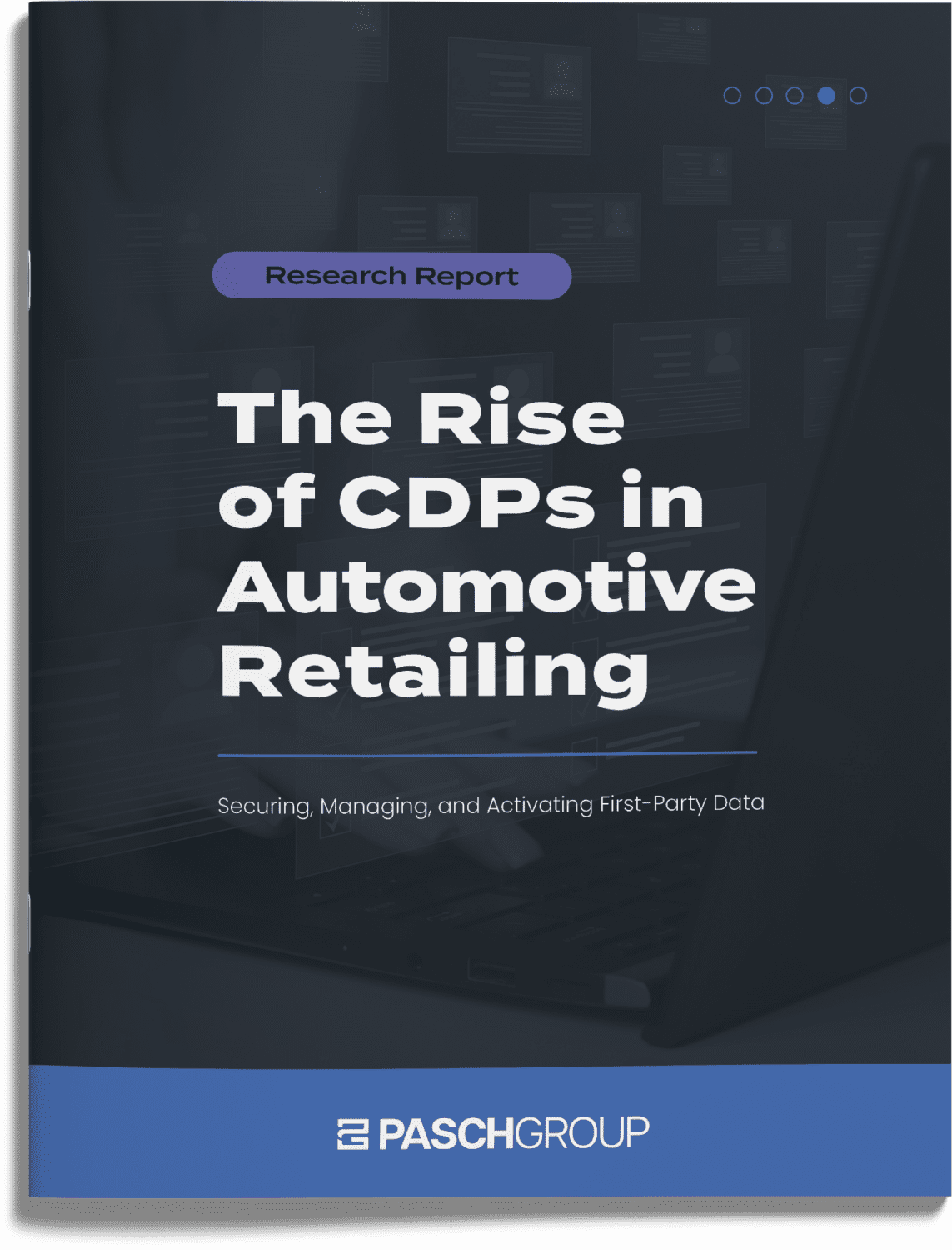A Customer Data Platform, or CDP, offers dealers the chance to unify their data and use consumer information effectively. While relatively new to automotive retail, companies in other industries have been using these tools for years to improve their customer service and simplify their operations. On this episode of Auto Marketing Now, host Brian Pasch, founder of PCG Companies and auto marketing expert, kicks off a new series exploring CDPs, what they have to offer and why dealers should make the shift.
The Rise of CDPs in Automotive Retailing study by Pasch Group
As of today, Pasch has published the entirety of his CDP research. With more than 30 interviews with relevant companies, as well as insights into first-party data management frameworks, identity vs entity resolution, CDP/MAP comparison charts and real-world use cases, dealers can learn everything there is to know about the subject. Be sure to check out the completed project here on PaschGroup.com.
Thanks to the proliferation of digital tools, today’s dealers are likely to share the customer data they obtain with up to twenty different platforms. This is because retailers use separate programs to track different segments of the car customer’s online journey. Google Analytics records the user’s progression through the site, while the CRM software files any information they provide through form submissions. If the storefront hires an outsourced marketing firm, it too will be using a different set of tools to track engagement.
This fragmentation of the car buyer’s journey can create problems for both dealers and customers. Many of these platforms do not communicate with each other, leaving it to the dealer to put together the big picture. “When I looked at the amount of fragmented data…it should be no surprise that no one has said that automotive retail delivers an amazing customer experience,” remarks Pasch. However, there is good news.
“Some of the largest dealer groups are investing in CDPs, Customer Data Platforms, to unify all of their customer data,” he explains. This could promote a significant shift in the way retailers conduct business. Rather than relying on an overly complex system with little inter-connectivity, store owners can funnel consumer information through one platform, unifying their data collection, outreach and analysis.
The simplicity of a CDP allows dealers to utilize their data more effectively. For example, f a retailer works with a business development company to conduct outreach and take calls, the representative will have no idea if the person on the line is a returning customer since the relevant data is outsourced to multiple companies with varying degrees of integration. However, with a unified system, all relevant information can be pulled from one source as soon as the call is placed, giving the agent data such as name, location, previously viewed products and so on. This makes the customer to client interaction far more personable, and improves the speed and quality of service.
There are many other cases where a CDP outshines the typical, fragmented system used by most dealers. However, the most important takeaway for dealers is that they must act quickly to fund and adopt these new tools. “…Dealer groups are finally realizing that these silos of data, fragments of the customer journey, are preventing them from looking professional, preventing them from delivering a great customer experience,” explains Pasch. By responding now, retailers can sharpen their competitive edge and face the new market landscape head on.




